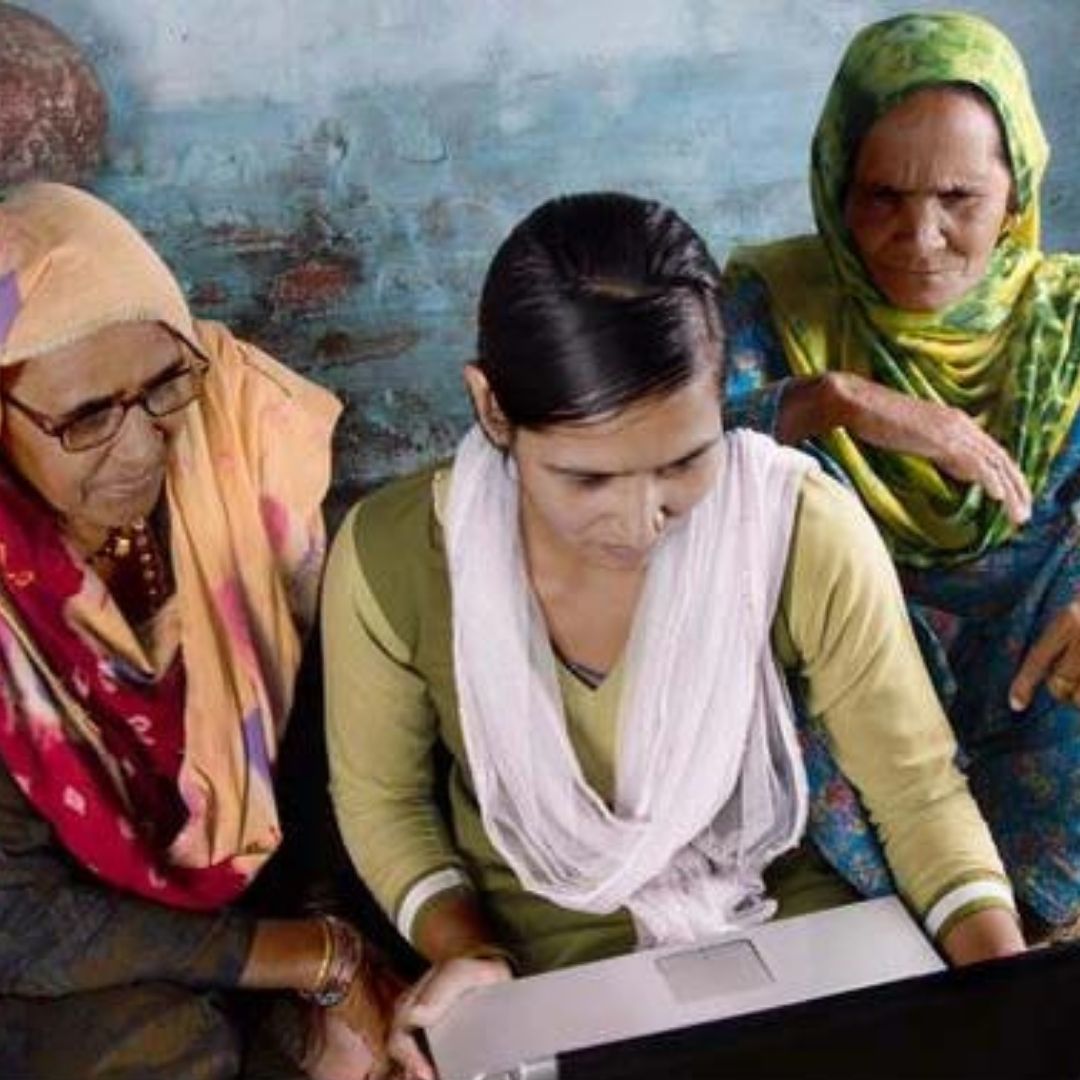
Image Credits: NDTV
India Continues To Witness Widening Gender Gaps; Impacts Rural-Urban Digital Divide
India, 23 Aug 2021 12:22 PM GMT
Editor : Ankita Singh |
A literature lover who likes delving deeper into a wide range of societal issues and expresses her opinions about the same. Keeps looking for best-read recommendations while enjoying her coffee and tea.
Creatives : Tashafi Nazir
For most people, journalism sounds hectic and chaotic. For her, it's a passion she has been chasing for years. With an extensive media background, Tashafi believes in putting efforts on presenting a simple incident in the most interesting way.
Within Asia-pacific, the widest gender gap in terms of internet usage was found in India. In comparison, the rest of the Asian countries showed a less gender gap. In Pakistan, it was 39.4 per cent, 11.1 per cent in Indonesia, and 2.3 per cent in China.
As COVID-19 surged through various countries, the respective governments locked the nations that drove people towards digital space. In just two months after the beginning of the pandemic, the digital marketplace raised by five years. As far as India is concerned, the government has set a target of reaching a US $1 trillion digital economies by 2025, which is considered a five-fold growth from the US $200 million in 2017–18.
Despite a 500 per cent increase in telehealth consultations, a structural shift towards virtual shopping with Indian districts showing a 95 percentage in e-retailing, and digital transactions touching the 100 million mark per day, it gave rise to another trend: The gendered digital divide.
Bangladesh's saw a 24 per cent gender gap in mobile ownership and 41 per cent in mobile usage. It was even higher in Pakistan at 34 per cent and 43 per cent for mobile ownership and mobile usage respectively.
Increasing Digital Divide In India
Whereas in India, women are 15 per cent less likely to own a cell phone, and 33 per cent less likely to use mobile data services than the male counterparts. Last year, a total of 25 per cent of the adult female population had a smartphone compared to 41 per cent of adult men. Despite the mobile ownership gap reducing from 26 per cent to 19 per cent, and mobile internet use gap from 67 per cent to 36 per cent in the last four years, South Asia continues to have the broadest mobile gender gaps across the world.
Within Asia-pacific, the widest gender gap in terms of internet usage was found in India. In comparison, the rest of the Asian countries showed a less gender gap. In Pakistan, it was 39.4 per cent, 11.1 per cent in Indonesia, and 2.3 per cent in China.
Triple Disadvantage; Rural-Urban Digital Divide
India's gender digital divide is considered to be born out of a triple disadvantage for the female folk. The rural-urban digital divide being the one. The rural broadband penetration is just 29 per cent compared to the national average of 51 per cent. In rural areas, women are likely to have their cell phones.
Goa, Kerala, and Northeastern states have the narrowest rural-urban divide and the widest in Maharashtra, Gujarat, Telangana and Andhra Pradesh. Secondly, there is an income-based digital gap between different households. As the average price for data is US $0.68/GB in India, the estimates show that each GB of data costs low-income families 3 per cent of their total monthly income compared to 0.2 per cent for middle-income households. Thirdly, intra-household discrimination prevents women from accessing digital devices within their domestic sphere, which widens the gender-based digital divide. Moreover, the rural broadband penetration comprises only 29 per cent compared to the national average of 51 per cent.
Even if the women are allowed to use mobile phones, male relatives often monitor their online activity. While some consider mobile phones a risk to women's reputation before and after marriage, phone use is considered a distraction to responsibilities. Women generally restrict themselves from speaking on their cell phones while in public and prefer to conduct their conversation inside houses, fearing social norms and unnecessary judgements. In this environment, women have been left behind from the increasingly digital economy post COVID-19, especially when aspiring for online learning, skill development, entrepreneurship, and work opportunities.
Families Give More Preference To Males
Also, when education shifted to digital mode, several stakeholders noticed that families gave preference for males. They made sure their sons had access to digital devices and data packs even when facing financial constraints, but the girls did not receive the same treatment.
Digital ignorance and unfamiliarity with the required platforms barred women entrepreneurs from shifting to online platforms after Covid. For example, bamboo artisans from West Bengal were hesitant to move to digital space due to limited social media knowledge combined with high data costs. Women Self-Help Group (SHG) members from various states like Maharashtra, Andhra Pradesh, Telangana and Gujarat shared that though women from their communities used phones for their personal use, they failed to do it for business purposes and were unable to make online transactions.
The gendered digital divide also prevents women from accessing government social security benefits and booking their online vaccination slots. Many women were deprived of the Covid relief, as they did not have their names registered on government websites and did not know about the online registration process.
Filling The Gap: Access To Digital Devices
As per the studies, giving women equal access to digital devices will equip them with the knowledge and resources they require to participate in the country's economy actively. They also suggested that various government and private organisations should come forward to support CBOs to uplift community-led digital literacy and financial inclusion programmes to combat the gender divide. Experts say that providing free mobile phones to school-going girls, female health workers, including ASHA workers, school teachers, and the rural and urban poor will fill this gap.
While India undoubtedly is digitising rapidly, its women must not be left out of the virtual conversation. Providing equal access to smartphones and the internet will equip women with the knowledge and resources to participate in the national economy effectively. It is. therefore, it is imperative to increase women's smartphone ownership as it assists in internet adoption and accelerate digital literacy programmes and work towards ending digital discrimination based on gender norms.
Also Read: The Unknown, Unheard Lot Of Women Farmers In India
 All section
All section














